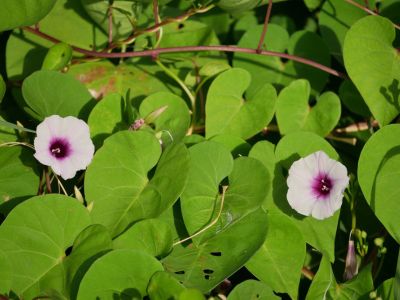Why Morning Glory is Not Blooming
Morning glories have been popular flowers for centuries. They were favorites for the cottage garden because they grew readily in poor soil and needed little special care. The vines grow at a rapid pace and eventually produce trumpet-shaped flowers. There are several species of morning glory, each of which develops at a different time. No morning glory flowers could mean the soil is too fertile, the plants aren’t sited correctly, or even that you have a late-blooming variety. If your morning glory won’t bloom, or blooms very little, there’s a pretty good chance that the problem is environmental. For example:
Soil – Many plants thrive in rich soil, but morning glory isn’t one of them; it prefers well-drained, poor or average soil. Although a layer of mulch is beneficial, skip the manure and avoid fertilizer. Too rich of a soil is often the reason for a morning glory not blooming, as rich or over-fertilized soil produces lush, beautiful foliage at the expense of blooms. Sunlight – Morning glories love full sunlight and a vine located in shade may not bloom. If the vine is young, you may be able to successfully transplant it to a more suitable location. If the problem is a tall tree or overhanging branches, a good pruning may allow more sunlight to reach the vine. Moisture – Morning glories like regular water – but not too much, as the soil shouldn’t be either bone dry or soggy. As a general rule, one deep watering per week is enough for this low-maintenance plant. Avoid frequent, shallow irrigation, which creates weak, shallow roots.
How to Get Blooms on Morning Glory
The key to getting morning glories to flower is to determine why morning glory is not blooming. You can throw remedies at it all you want, but until you understand why it is not flowering, you are just guessing and wasting time. For instance, some gardeners feel that fertilizing with a bloom food will force buds. While it is true that high phosphorus fertilizers promote the formation of buds, the application can do more harm than good because most plant food also contains nitrogen. This causes leaves, shoots, and stems to grow, which will only cause more vegetation. Other causes might be lack of water or you have a late-blooming variety. Check with your County Extension office and ask them when your variety should be blooming in your area.
Don’t Panic if Morning Glories Not Blooming
So this season you didn’t get any blooms. That means you need to take steps to ensure plenty of flowers next year. Some vines bloom like crazy when the vine is allowed to sprawl on the ground, but morning glory flowers do best with a support system. Provide a trellis, fence, arbor, or other sturdy structure. If your new morning glory plant hasn’t flowered yet, be patient. Morning glories can take a couple of months, up to 120 days from seed to flower, to burst out in blooms, especially if you planted the vine from seed. They are one of the last annuals to bloom in most regions, often in August or even early September. If you have a short growing season, start them indoors three weeks before the date of the last frost. Soak the seeds for 24 hours before planting them and scar the outer surface of the seed first. Plant seeds ½ inch (1 cm.) deep and keep the flat moderately moist in a warm environment. Plant the seedlings out after all danger of frost has passed, in a neglected but sunny area of the garden with nutrient poor to sandy soil. You will be surprised at how quickly the plants establish and the extra time should increase the likelihood of blooms.
